Alabastro transparente and fiorito, rosso antico, gilt bronze.
Rome.
ca. 1780-1795.
h. 15 in.
A miniature model of an ideal tempietto’s tetrastyle portico, designed and sculpted by Luigi Valadier to adorn the famous desers of the late 18th century. The tempietto itself is carved and decorated with gilt bronzes on both sides, as were all the miniature monuments meant to adorn the great desers of the late eighteenth century.
The Deser da Tavola, objet de luxe par excellence, was a composition of sculpted and carved pieces : medals, miniature sculptures and architecture and other objets d’art — a miniature museum, intended to adorn the centre of the table of the grandees and of the sovereigns.
Unlike other, later works of the same kind, such as the Antonio Chichi’s Portico of Octavia or Pantheon, Carlo Albacini’s the Temples of Hera in Paestum, this tempietto is not a strict, methodical reduction of a real monument. It is an imaginary temple, an architectural reverie (Alvar González-Palacios) based on Antiquity, an art in which Luigi Valadier was the undisputed master in Rome at the time.
Luidi Valadier, born in Rome on 26 February 1726, the son of André Valadier, a French goldsmith born in the south of France near Avignon, conceived in 1778, at the end of a long career as a goldsmith, two desers for Jacques-Laure Le Tonnelier, bailiff of Breteuil, the second of which, bought by Charles IV of Spain, then Prince of Asturias, is perhaps his greatest masterpiece. Luigi Valadier, in fact, designed several works of the same kind : a support of a deser for the Borghese in 1772, a deser for Archduke Ferdinand of Austria in 1780, another deser in 1783, the superbo Deser, which became famous in Rome, commissioned by the obscure Duke Braschi, nephew of Pope Pius VI ; and yet another deser, this time for the Portuguese ambassador in Madrid, in 1784.
The Braschi deser was stolen by the Revolutionaries, then packed, probably quite roughly, and shipped to Paris in February 1798 ; it suffered a great deal of damage in the process, and many of its porticoes, colonnades, miniature sculptures and temples, were destroyed or lost.
This tetrastyle tempietto of a fantastic roman-doric order, probably inspired by the capitals of the Thermae of Diocletian, is from a compositional point of view related to an element of the ideal Circus Maximus created by Luigi Valadier sometimes after 1778. This element is also described by Alvar González-Palacios as a tempietto : it is a miniature tetrastyle portico, this time in an Ionic order, still quite fantastic. Four columns in stone, which shaft shows a discrete the entasis, and bases and capitals in gilt bronze. The frieze is adorned with the typical gilt bronze garlands of Luigi Valadier. The sides of the cornice are decorated with a rosette.
Another element, this time belonging to the bailiff of Breteuil's second deser, shows many common features with our tempietto : it is a simple four-columned monument, with an idealised composition and ornamentation like ours. These two monuments share the alabaster entablature and the sculpture and modelling of the columns : the finely sculpted torus at the base of the hard stone shaft meets a gilt bronze torus without any scotia ; the shaft of the column is also sculpted with an entasis, a slight curve invented by Ancient Greek architects to make the silhouette of the column look thinner ; as for the gilt bronze capital, the eschinus is decorated with a rosette in both cases.
When it comes to the choice of stones, however, out tempietto is closer to a pair of exedras designed by Luigi Valadier for the second deser of the bailiff of Breteuil, which was purchased by the King Charles IV of Spain and is now on display at the Palacio Real in Madrid. The columns, carved in the same alabaster, have the same entasis ; and these exedras, 33 cm high, according to the catalogue of the exhibition Luigi Valadier : Splendor in Eighteenth-Century Rome, are exactly as tall, at the cornice, as our tempietto.
We also know that the range of colours and the choice of stones were not at odds with the Valadiers' habits. One of the largest desers commissioned to the Valadier workshops was that of Maria Carolina of Austria, Queen of Naples. This one was designed by Giuseppe Valadier and Carlo Albacini under the direction of the architect and archaeologist Domenico Venuti. Like our temple, it features an entablature in transparent alabaster, a tympanum in rosso antico and columns in alabatro fiorito.
Some discrete marks of restoration on the marble.
Provenance
Antichità Alberto di Castro
Sources
Alvar González-Palacios, "Biography of the Valadier Family", in Valadier. Three Generations of Roman Goldsmiths, London, 1991.
Alvar González-Palacios, in Luigi Valadier au Louvre ou l'Antiquité exaltée, Paris, 1994.
Isabelle Tamisier-Vétois, Jean Vittet and Marie-France Dupuy-Baylet, in De Bronze et de pierre dure. Un cadeau espagnol à Napoléon, Dijon, 2013.
Alvar González-Palacios, I Valadier. L'Album dei disegni del Museo Napoleonico, Rome, 2015.
Henri William Pullen, Manuale dei marmi romani antichi, Rome, 2015.
Alvar González-Palacios, Luigi Valadier, New York, 2018.
Geraldine Leardi, Valadier. Splendore nella Roma del Settecento, Perugia, 2019.



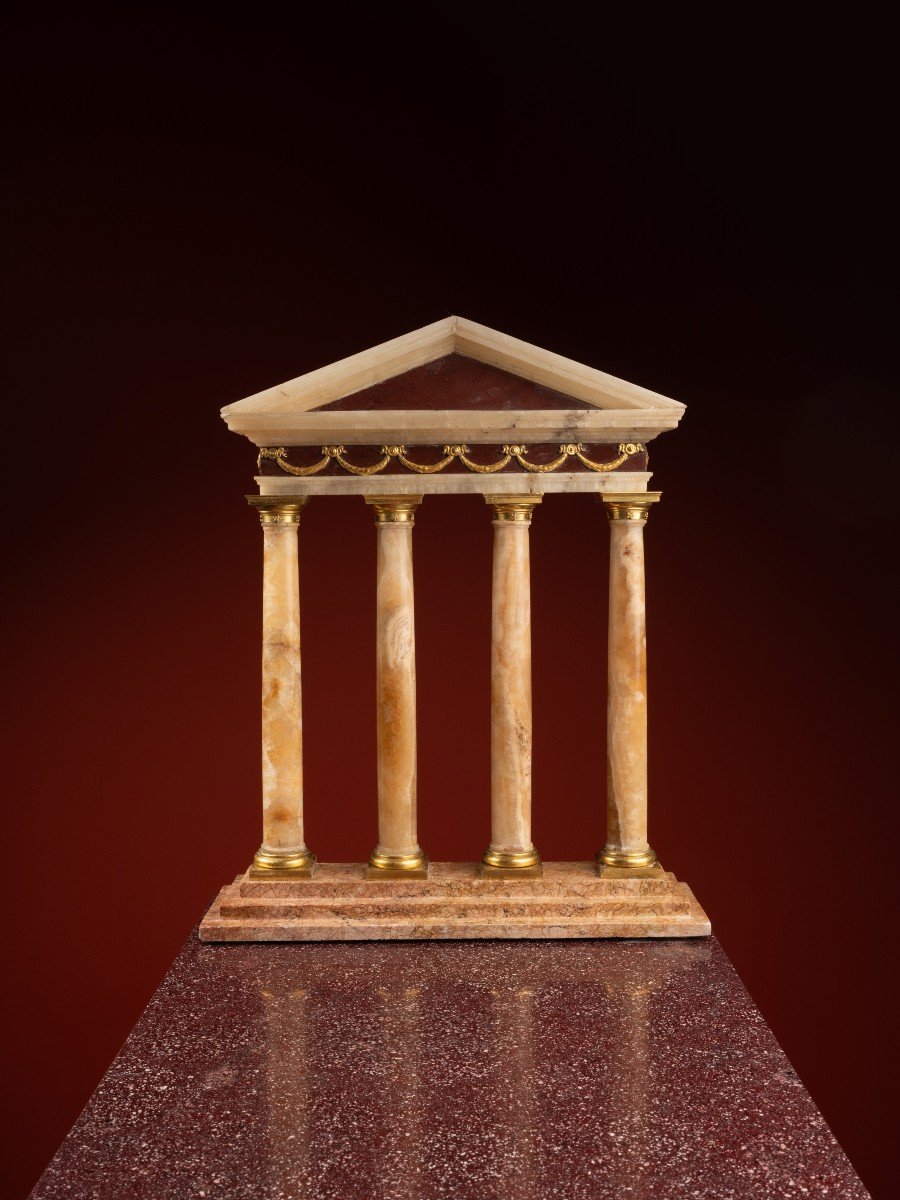
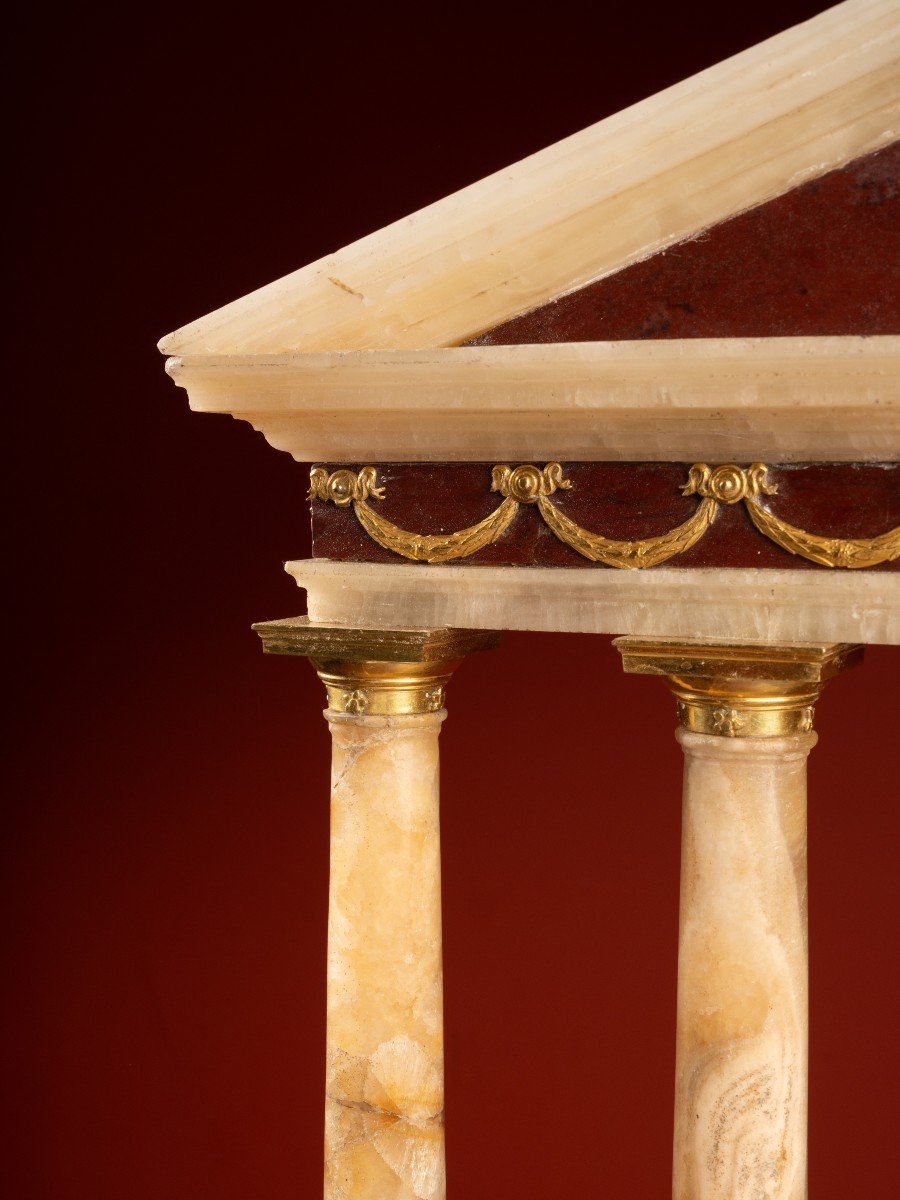
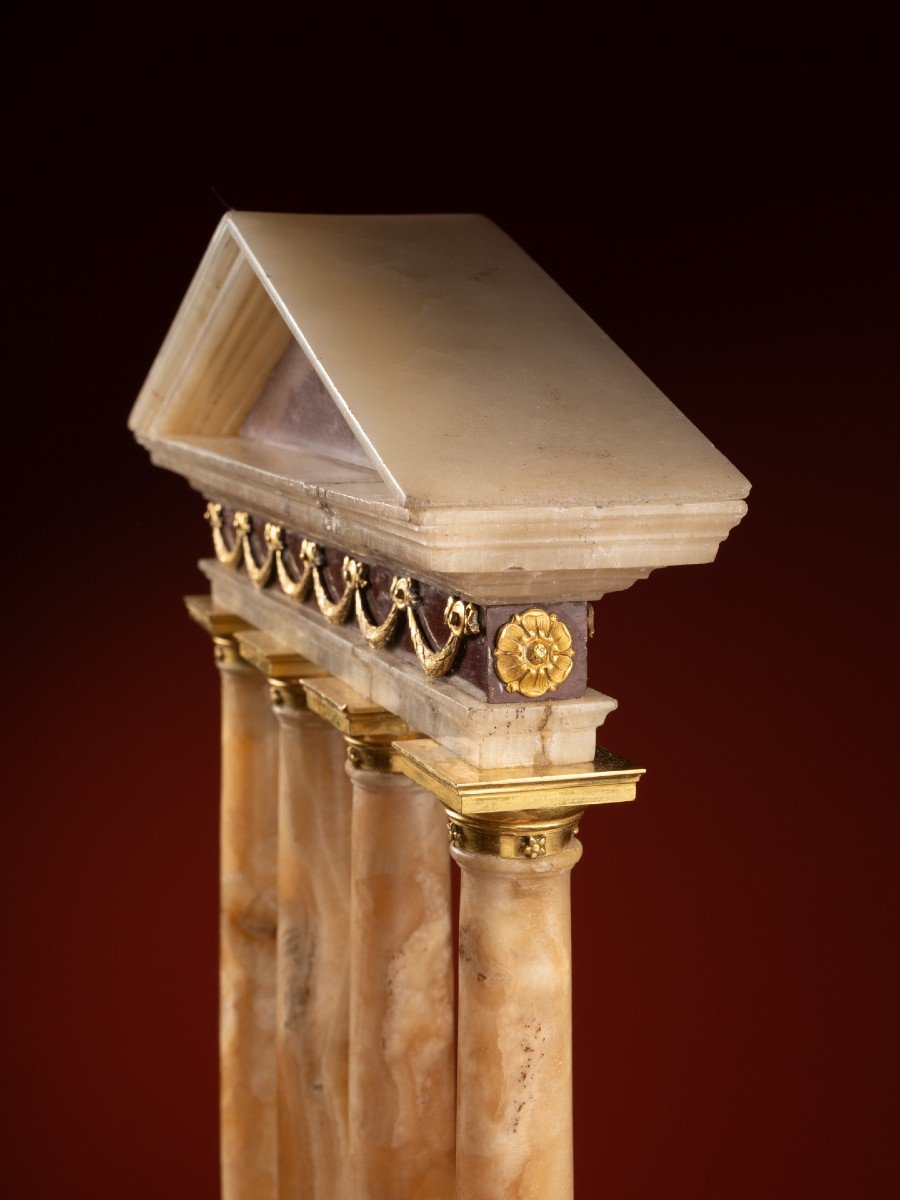






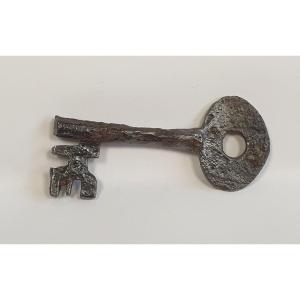

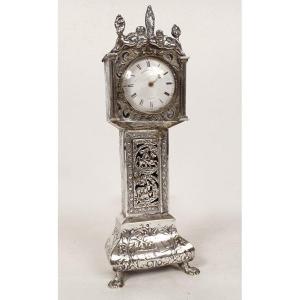

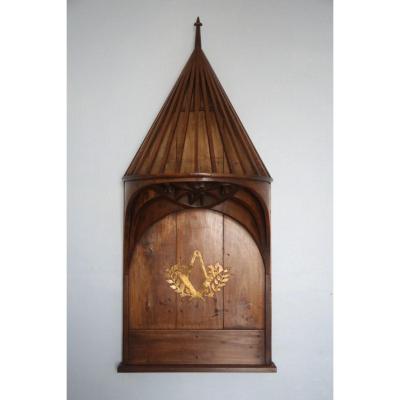




 Le Magazine de PROANTIC
Le Magazine de PROANTIC TRÉSORS Magazine
TRÉSORS Magazine Rivista Artiquariato
Rivista Artiquariato
